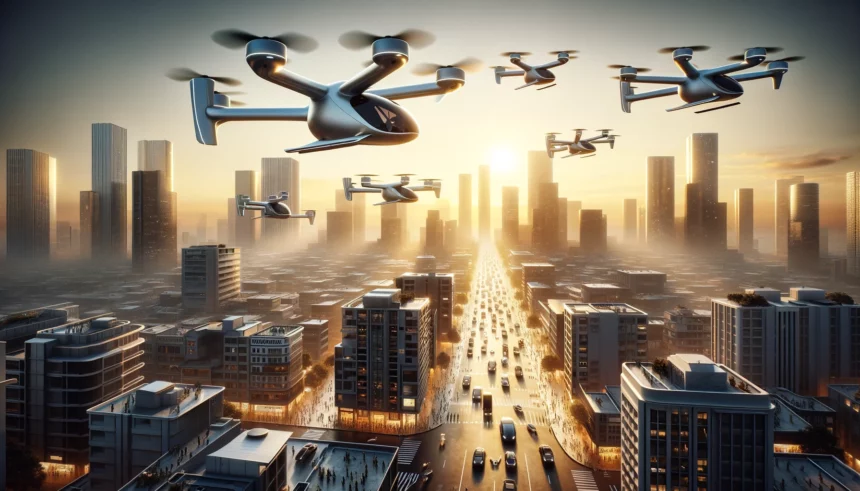Electric air taxis, almost as quiet as whispers, might start flying passengers around cities as soon as 2025. These taxis, called electric vertical takeoff and landing aircraft (eVTOLs), could soon be a common sight in cities like Chicago and New York. United Airlines is making plans to include these taxis in its service, and they may even be featured in the 2024 Paris Olympics.
Companies like Joby, Archer, Wisk, and Lilium are at the forefront of this innovation, backed by significant funding from venture capitalists and major aerospace players such as Boeing and Airbus. Their aim is to transform short-distance travel with these electric aircraft, which could help reduce traffic congestion in cities, cut down on pollution, and provide a faster option for reaching places that are hard to access by traditional means.
Electric air taxis are designed for short trips, like those a helicopter might make, but at a lower cost and with less environmental impact. For example, United Airlines plans to test these air taxis for quick trips from city centers to major airports like Chicago’s O’Hare and New York’s Newark Liberty International Airport.
Although initially, these taxis might also be used for military or emergency situations, the long-term goal is to make them a common sight for everyone, paving the way for a cleaner and more efficient mode of urban transport.
However, the technology does face significant challenges, especially with current battery technology, which can’t yet match the long distances traveled by fuel-powered aircraft. But as battery technology improves, these electric air taxis could cover more ground. Researchers are also exploring hydrogen as a potential alternative fuel because it can store more energy and only emits water vapor, though it comes with its own set of challenges.
Regulations are another hurdle. For now, the U.S. Federal Aviation Administration insists these taxis must have pilots, just like traditional aircraft. And there are ongoing discussions about who would manage these new “air highways” — whether it would be national or local authorities or a mix of both.
Despite some safety concerns from past test flights and the challenges ahead, the vision for a sky filled with quietly humming electric taxis is becoming clearer and could soon become a reality.















